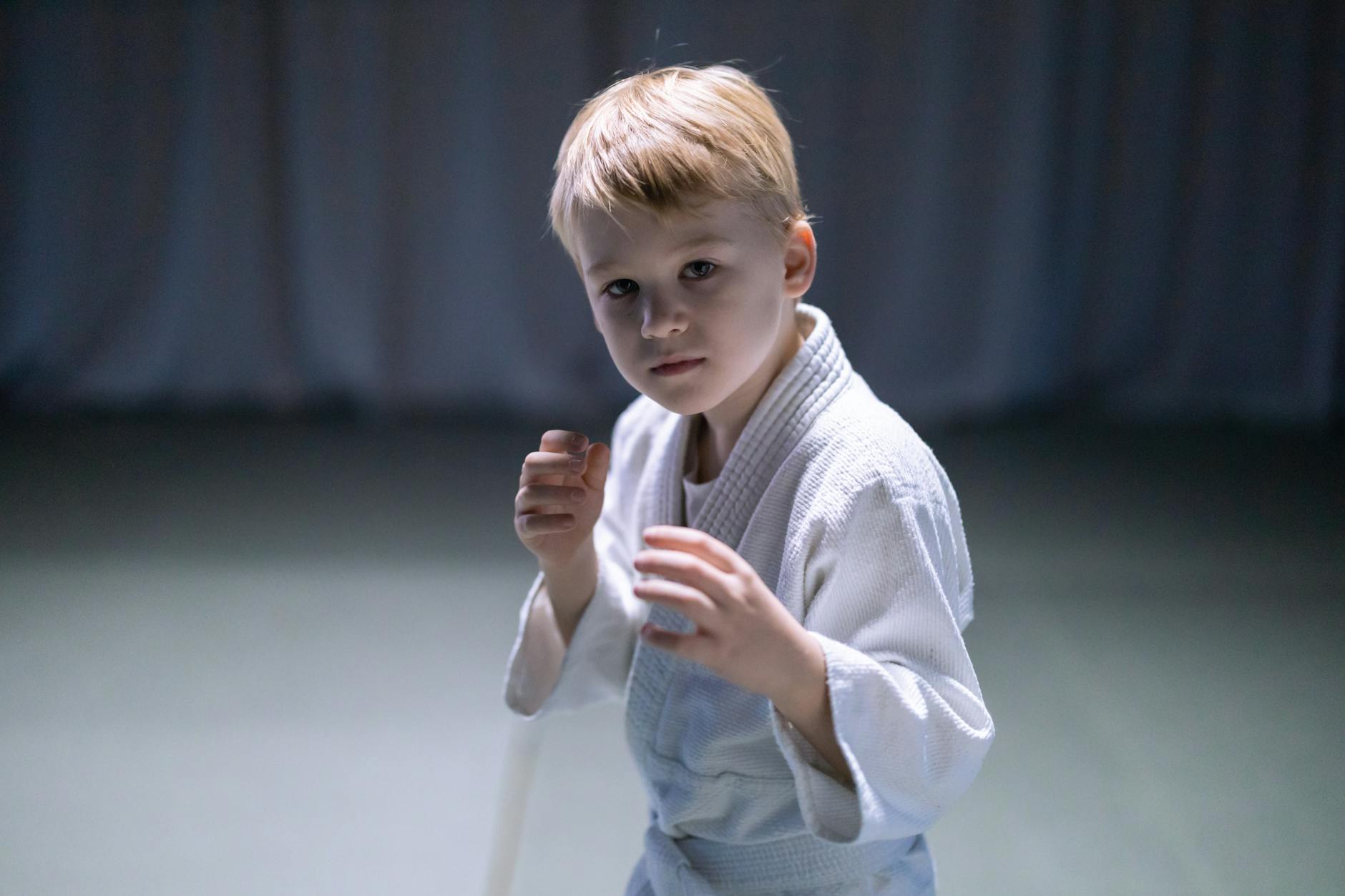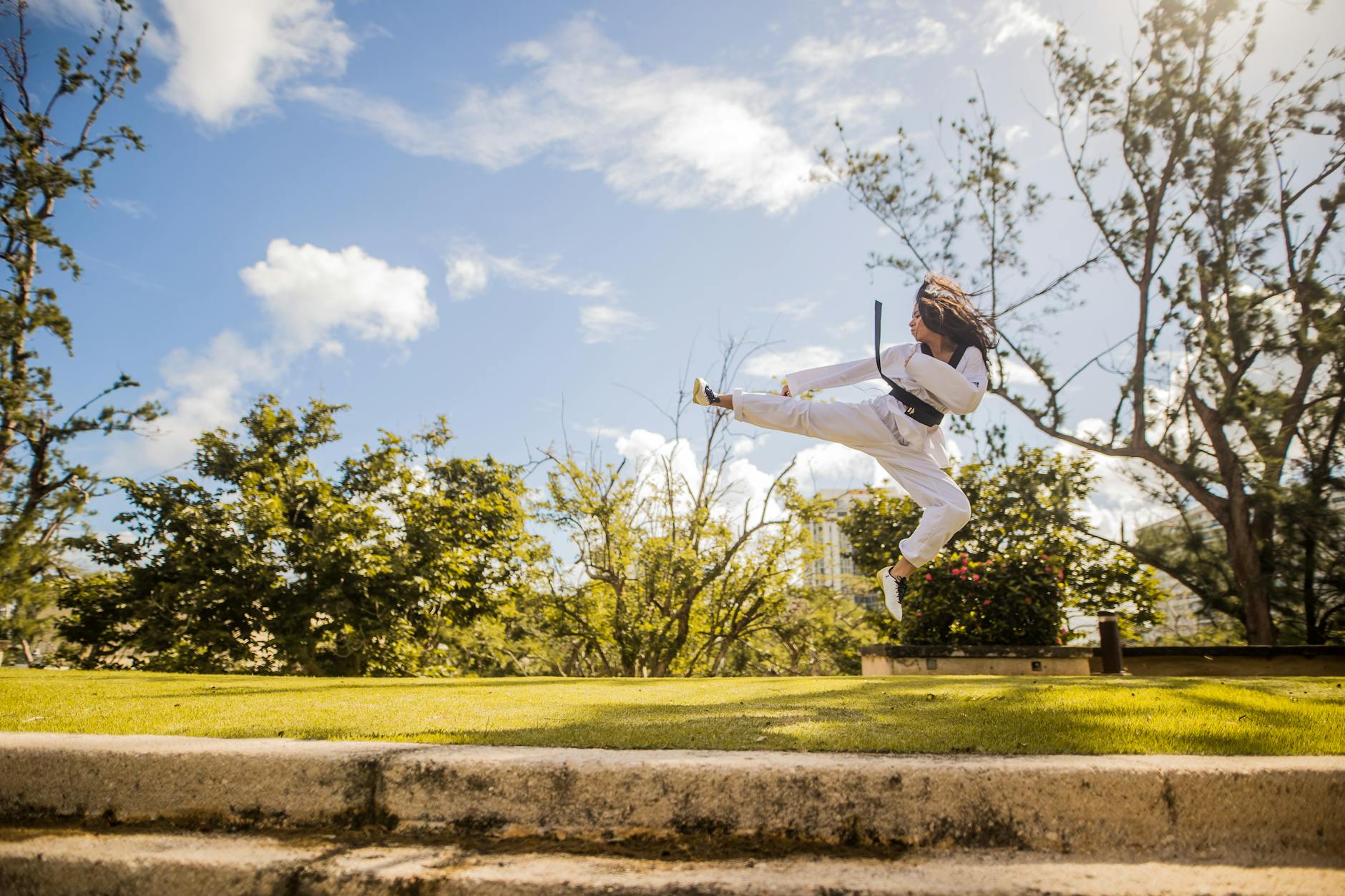
Parent's Guide to Supporting Kids in Martial Arts
Parent's Guide to Supporting Kids in Martial Arts

Are you looking for a way to boost your child's confidence, discipline, and physical fitness?
🥋 Martial arts might be the perfect solution! But as a parent, you may feel overwhelmed by the various styles, potential risks, and commitment required. Don't worry – we've got you covered!
In this comprehensive guide, we'll walk you through everything you need to know about supporting your kids in martial arts. From choosing the right discipline to addressing common concerns, we'll equip you with the knowledge to help your child thrive in their martial arts journey. Get ready to unlock a world of physical and mental benefits for your little warrior!
Let's dive into the seven key areas every parent should understand to ensure their child's success and enjoyment in martial arts training. Whether you're just starting to explore this option or your child is already on their way to earning a black belt, this guide will provide valuable insights to support their growth and development.

Understanding the Benefits of Martial Arts for Kids
Physical fitness and coordination
Martial arts provide an excellent full-body workout for children, enhancing their overall physical fitness. Regular training improves:
Strength
Flexibility
Balance
Cardiovascular endurance
These physical benefits contribute to better coordination and body awareness, which can positively impact other areas of a child's life.
Self-defense skills
While the primary goal isn't to encourage fighting, martial arts equip children with valuable self-defense techniques. These skills boost:
Situational awareness
Conflict resolution abilities
Personal safety knowledge
Discipline and focus
Martial arts instill discipline through:
Structured training routines
Respectful etiquette
Goal-setting and achievement
This discipline often translates to improved focus in school and other activities.
Confidence building
As children progress in their martial arts journey, they experience:
Increased self-esteem
Better self-expression
Improved social skills
These factors contribute to a more confident and well-rounded individual.
Respect for others
Martial arts emphasize respect in various forms:

This cultivated respect often extends beyond the dojo, positively influencing a child's interactions in daily life.
With these numerous benefits in mind, let's explore how to choose the right martial art for your child.

Choosing the Right Martial Art for Your Child
Now that we've explored the benefits of martial arts for kids, let's focus on selecting the perfect discipline for your child. This decision is crucial for ensuring your child's enjoyment and long-term commitment to their martial arts journey.
Assessing your child's interests and personality
Consider your child's unique traits when choosing a martial art:
Energy level: High-energy kids may prefer dynamic styles like Taekwondo
Focus: Children who need help with concentration might benefit from Karate
Physical contact: Some children enjoy grappling (Judo), while others prefer striking (Boxing)
Exploring different martial arts styles
Here's a comparison of popular martial arts styles for children:

Considering age-appropriate options
Different martial arts have varying age recommendations:
Ages 4-6: Basic movement classes or "Little Ninja" programs
Ages 7-12: Most traditional martial arts (Karate, Taekwondo, Judo)
Ages 13+: More intense styles (Brazilian Jiu-Jitsu, Muay Thai)
Evaluating local dojos and instructors
When selecting a dojo:
Observe a class to assess teaching methods and atmosphere
Check instructor qualifications and experience with children
Read reviews from other parents
Ensure the facility is clean and safe
Remember, the right martial art should align with your child's interests, personality, and physical capabilities. By carefully considering these factors, you'll set your child up for a rewarding martial arts experience. Next, we'll discuss how to prepare your child for their martial arts training.

Preparing Your Child for Martial Arts Training
Setting realistic expectations
Before your child begins their martial arts journey, it's crucial to set realistic expectations. Explain that progress takes time and dedication. Create a table to illustrate typical milestones:

Discussing safety and rules
Safety is paramount in martial arts. Have an open conversation with your child about:
The importance of following instructor's guidance
Respecting training partners
Using techniques only in appropriate settings
Acquiring proper gear and attire
Ensure your child has the right equipment for a positive experience:
Uniform (gi) appropriate for the chosen martial art
Protective gear (if required) such as mouthguards or headgear
Comfortable, breathable clothing for under the uniform
Establishing a consistent practice routine
Consistency is key to progress in martial arts. Help your child develop a routine:
Set aside specific times for at-home practice
Create a dedicated space for training
Encourage regular attendance at classes
By preparing your child thoroughly, you set the stage for a rewarding martial arts experience. This foundation will help them develop discipline, respect, and a growth mindset that extends beyond the dojo. As we move forward, we'll explore how to effectively support your child's progress throughout their martial arts journey.

Supporting Your Child's Progress
As your child embarks on their martial arts journey, your support plays a crucial role in their development. Here's how you can effectively support your child's progress in martial arts:
A. Encouraging regular attendance
Consistency is key in martial arts training. To help your child maintain regular attendance:
Create a visual schedule to track classes and practice sessions
Set reminders on your phone or family calendar
Discuss the importance of commitment and discipline
B. Helping with at-home practice
Reinforce your child's learning by supporting their at-home practice:
Designate a safe practice area in your home
Practice basic moves together
Use online resources or instructional videos for guidance
C. Celebrating achievements and milestones
Recognizing your child's progress boosts their motivation and confidence:

D. Addressing challenges and setbacks
Help your child navigate difficulties:
Listen to their concerns without judgment
Encourage problem-solving and resilience
Communicate with instructors for additional support
Focus on effort and progress rather than perfection
Remember, your positive attitude and consistent support can significantly impact your child's martial arts journey. By actively engaging in their progress, you're not only supporting their martial arts development but also fostering valuable life skills.

Balancing Martial Arts with Other Activities
Now that your child is engaged in martial arts training, it's important to find a balance with other activities and responsibilities. Let's explore how to manage this effectively.
Managing time and schedules
Balancing martial arts with other activities requires careful planning. Here's a simple table to help you organize your child's weekly schedule:

Integrating martial arts principles into daily life
Martial arts teach valuable life skills that can be applied beyond the dojo. Encourage your child to practice these principles in everyday situations:
Discipline: Completing homework before play
Respect: Showing courtesy to teachers and peers
Focus: Concentrating on tasks at hand
Perseverance: Tackling challenging subjects in school
Fostering a healthy competitive spirit
While martial arts can be competitive, it's essential to maintain a balanced perspective. Here are ways to promote healthy competition:
Emphasize personal growth over winning
Celebrate effort and improvement
Teach good sportsmanship
Encourage learning from both victories and defeats
By integrating these strategies, you can help your child reap the full benefits of martial arts while maintaining a well-rounded lifestyle. Next, we'll address some common parental concerns about martial arts training.

Addressing Common Parental Concerns
As we delve into common parental concerns about martial arts, it's important to address these issues to ensure a positive experience for both children and parents.
Safety and injury prevention
Safety is paramount in martial arts training. Reputable dojos prioritize injury prevention through:
Proper warm-up and cool-down routines
Age-appropriate techniques and training methods
Qualified instructors with first aid training
Use of protective gear during sparring sessions

Dealing with aggression and bullying
Contrary to popular belief, martial arts often reduce aggression and bullying by:
Teaching self-control and discipline
Boosting self-confidence
Promoting respect for others
Providing non-violent conflict resolution skills
Balancing academics and martial arts
Martial arts can complement academic pursuits by:
Improving focus and concentration
Teaching time management skills
Instilling a strong work ethic
Providing stress relief and physical activity
Financial considerations
While martial arts training involves costs, consider:
Long-term benefits outweighing short-term expenses
Potential scholarship opportunities
Family discounts at many dojos
Comparison shopping for best value
Now that we've addressed these common concerns, let's explore how to maximize the long-term benefits of martial arts training for your child.

Maximizing the Long-Term Benefits
Setting goals and tracking progress
Setting clear goals and consistently tracking progress is crucial for maximizing the long-term benefits of martial arts for your child. Encourage your child to set both short-term and long-term goals, such as mastering a specific technique or achieving a certain belt level. Use a goal-tracking system to monitor their progress:

Encouraging advancement through belt levels
Belt progression is a key motivator in martial arts. Support your child's journey through the ranks by:
Celebrating each belt achievement
Helping them understand the requirements for the next level
Practicing at home to reinforce dojo lessons
Exploring competition opportunities
Competitions can significantly boost your child's skills and confidence. Consider:
Local tournaments for beginners
Regional or national events for more advanced practitioners
Different competition formats (forms, sparring, weapons)
Nurturing a lifelong passion for martial arts
To foster a lasting love for martial arts:
Emphasize personal growth over winning
Expose your child to martial arts history and philosophy
Encourage them to become assistant instructors as they advance
Explore different styles to maintain interest and broaden skills
By focusing on these aspects, you'll help your child reap the full benefits of martial arts training, potentially turning it into a lifelong pursuit that contributes to their physical, mental, and emotional well-being.

Martial arts can be an incredible journey for children, offering a wealth of physical, mental, and emotional benefits. As parents, your support plays a crucial role in your child's success and enjoyment in their chosen discipline. By understanding the various martial arts styles, preparing your child for training, and actively supporting their progress, you can help them make the most of this enriching experience.
Remember, the goal is not just to create skilled martial artists but to nurture well-rounded individuals. By balancing martial arts with other activities and addressing common concerns, you can ensure your child reaps the long-term benefits of their training. Encourage your child to embrace the values and lessons learned in martial arts, and watch as they grow into confident, disciplined, and respectful individuals both on and off the mat.